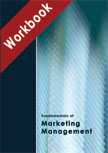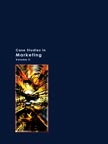Unilever in India: Managing Brand Extensions




|
|
ICMR HOME | Case Studies Collection
Case Details:
Case Code : MKTA022
Case Length : 18 Pages
Period : -
Pub Date : 2005
Teaching Note :Not Available
Organization : -
Industry : -
Countries : -
To download Unilever in India: Managing Brand Extensions case study
(Case Code: MKTA022) click on the button below, and select the case from the list of available cases:

Price:
For delivery in electronic format: Rs. 400;
For delivery through courier (within India): Rs. 400 + Rs. 25 for Shipping & Handling Charges
» Marketing Case Studies Collection
» Marketing Communications Short Case Studies
» View Detailed Pricing Info
» How To Order This Case
» Business Case Studies
» Case Studies by Area
» Case Studies by Industry
» Case Studies by Company
Please note:
This case study was compiled from published sources, and is intended to be used as a basis for class discussion. It is not intended to illustrate either effective or ineffective handling of a management situation. Nor is it a primary information source.
|
To Purchase
Bulletin & Application Form
Click Here
|
|
|
<< Previous
Background Note Contd...
|
In 1930, the company merged with 'Margarine Unie' (a Netherlands based company which exported vanaspati to India), to form Unilever. In 1931, Unilever set up its first Indian subsidiary, the Hindustan Vanaspati Manufacturing Company for producing vanaspati. This was followed by the establishment of Lever Brothers India Ltd. in 1933 and United Traders Ltd. in 1935, for the distribution of personal products. In November 1956, the three Indian subsidiaries merged to form HLL. In the 1990s, HLL expanded its operations through mergers and acquisitions. In April 1993, the company acquired its largest competitor, Tata Oil Mills Company (TOMCO), the biggest such deal in Indian industry till that time.
|
|
HLL formed a 50:50 joint venture with another Tata company, Lakme Ltd in 1995. The venture named 'Lakme Lever Ltd.' marketed Lakme's leading cosmetics and other associated products.
|
|
(Subsequently in 1998, Lakme sold its products to HLL and divested its 50% stake in the venture). In January 1996, HLL absorbed a group company Brooke Bond Lipton India Ltd2 (BBLIL) in January1996, followed by another group company, Pond's India Ltd in January 19983.
By the late 1990s, the integration of the different Unilever entities operating in India, had been largely completed. Till the mid-1990s, bulk of HLL's growth had come through acquisitions. Realising that many of the growth opportunities had been exhausted, Chairman Keki Dadiseth launched Project Millennium in the late 1990s. In 1999, around the time Banga took charge, signs of slower growth were evident... |
Excerpts >>
|
|



